Delivering Profitability A Financial Business Consultant’s View
How to increase business profitability.
Chapter 1 – Sitting on a whale
If you’re like most business owners or managers, you are in one of three categories:
- Constantly on the lookout for opportunities to increase net income
- “Sitting on a whale fishing for minnows”
- Not rocking the boat – Happy just to have your job and that nobody is complaining too loudly
If you’re in the first category, you’ve likely already pulled all the levers you know and need to find some new ones. If you’re in the second category, you probably want to find a lever which will help you make incremental improvements without taking too much risk. And yes, even if you are willing to admit that you are in the third category, it might be good to have one or two new ideas in your back pocket just in case the Board of Directors, your investors or your business partners decide good enough just isn’t any longer.
The tricky part is knowing which levers to pull and having the time to put it all together in a way that’s compelling for those who may need to approve the changes necessary to produce the desired results.
1 Joseph Campbell, The Power of Myths, 1988

Before every football game Vince Lombardi held up a football and told his team “This is a Football.” Keeping players focused on why they were there and the most fundamental element in the game.
Business is about profitability. While business owners or stakeholders may have additional goals, with few exceptions, without profitability the business will fail.
What are the critical elements that every business owner should consider about delivering profitability?
Knowing where to look and how to think about financial performance and profitability can save precious time and effort in delivering solutions. While every aspect of a business can impact profitability, the first thing to consider is the basic financial building blocks and key drivers of profitability. At the most basic level, profitability is driven by total revenues minus total expenses. Even though this may be obvious to most business people, the basics are a good starting point.
All too often even very large business make critical mistakes by not looking at the basics. Given that there are many complexities in how to increase profitability, it makes sense to have a good understanding of the overall business and the key drivers of profitability — both in revenue and expense and to make sure the business isn’t running up against a fundamental business model challenge.
I have seen a company try to solve a business model challenge by cutting expenses. And, I’ve seen another company try to solve an expense problem by increasing sales. In the first case, the company kept cutting and then rehiring staff, failing to understand that without changing the business model their efforts were doomed to fail. In the second case, a major bank kept raising sales incentives and putting pressure on branch staff to sell more of an insurance product that wasn’t covering its purely variable expenses. The more they sold and the more they raised incentives, the more unprofitable the business unit became. The senior executive in charge of the unit became increasingly adamant that they must sell more, while also gently blaming the branch channel management for his products not being profitable.
Likewise, I’ve seen companies sacrifice the quality of their product to save pennies and I’ve seen companies increase prices which were not justified. While there is a market for companies who master saving the most cost and becoming the cheapest provider, this strategy typically requires massive scale and even these very large companies are at risk of losing customers to a competitor who does things better. In most cases, the companies which reduce quality or raise prices which are not justified negatively impact long-term profitability by losing highly valuable customers.
Driving profitability is not simply about cutting costs or raising prices, it’s about making smart, educated, well-researched decisions based on a solid foundation of information and business insights. Having both sufficient data and accuracy in data and analysis can significantly increase the probability of the desired outcome.
The Anatomy of a Profitability Project
So how does a founder or business owner, CFO, accountant, financial or business executive avoid the pitfalls and successfully launch a profitability project?
Start with the big picture and a high level understanding of the business, including any material changes in your operating environment. Was there a time when the business was doing better? If so what changed?
In most cases, to generate the most value it makes sense to start with a very broad view of the business, including the overall business strategy. Next, determine which of the drivers are most likely to have the greatest opportunity.
In a small business, typically any and all aspects of the business can be changed fairly easily. And, the small business owner has incentive to make changes. But beware not to make changes too often. I was a contributor to a book which looked at the deadly growth killers. An important growth Killer was when business owners changed strategy too often.
For larger businesses, while the broad approach has the potential to have the greatest impact, the complexity of numerous stakeholders and internal powerhouses sometimes makes this approach too slow or too complex and the business is likely to find it too difficult to get everyone on board.
Case Study: A Large Firm with a Complex Infrastructure Tackles Profitability Project
During one massive enterprise-wide project with a $700 million expense saving target, I helped set a solid foundation for broad changes. While the project was eventually divided into smaller projects when the enterprise-wide effort lost steam, it successfully laid the important groundwork that helped the company become one of the top performers in it’s industry.
1) For the first time the enterprise recognized from both an expense and quality perspective the value of having a single unified view of its customers. Previously, every business unit felt they “owned” their customers. This led to customers being bounced around to get answers when they had more than one account or when their question crossed company silos. One outcome of the project was a single enterprise view of the customer. While it took several years to reorganize silos and call centers, the company eventually became recognized as a leader in customer service and saved massive amounts of resources by being able to answer customers’ questions without multiple hand-offs. Likewise, the single view of the customer allowed the organization to make much smarter decisions in serving customers and in building new customer relationships.
2) A second major outcome of the enterprise project was the recognition of the resources being wasted on numerous redundant vendor negotiations being done in each organizational silo. Based on the new insights, the organization became one of the pioneers in enterprise-wide strategic sourcing. This one change was estimated to save the organization between $50 million and $100 million in purchasing expense, improve the quality of the items and services being purchased, and reduce risk.
While the broad enterprise-wide review can work for large companies, for various reasons it often make sense for large companies to drill deep just in one driver of profitability or, perhaps, a few closely related drivers.

First Steps
One of the first challenges in determining next steps within a profitability project is to determine what method(s) of review to use to produce the desired results. The following chapters will go into some detail on the many methods of driving profitability. Also, it’s important to understand that many of these variables interact and overlap with other drivers of profitability. In fact, often some of the greatest opportunities a consultant finds are in the gray area between two functions, where both functions look at a specific type of opportunity but neither function looks at how the two impact each other.
Profitability can be positively impacted by better understanding the key profit drivers and their interplay. Each of these will be discussed in more detail in the following upcoming chapters of this book.
Business Strategies That Drives Growth and Profitability
Understanding Customers and Their Impact on Profitability
Leadership and Organizational Structures: Create a Common Vision
Product Profitability as a Building Block to Overall Profitability
Business Unit Profitability and the Interplay Between Units
Cheap or Good: Local Impact on Profitability
Quality and Efficiency in Business Operations and Processes
Efficiency in Key Expense Drivers
The Impact of Cash Flow on Business Decision Making
External Spending: Efficiency, Quality, and Risk Management
Regulated Expenses: What is Necessary?
Resource Leakages: Finance and Beyond
Driving Results Through Financial Management Processes
Risk Management and Advanced Financial Topics
How to Work With External Variables
What Gets Measured Gets Done: Financial and Performance Measurement and Dashboards
Conclusion: It’s Your Time to Thrive
Example of an Opportunity that Overlaps Multiple Functions
Real estate is often managed in a sourcing or purchasing function. Human Resources manage people and their benefits. While individual business units pay the underlying expense and may establish performance systems. Despite numerous studies which show the value of well-structured flexible working arrangements, most businesses can’t see the value because each group (Sourcing, HR and the Business Unit) are each only seeing one part of the total picture. In the worst cases, each group works independently and rolls out a program which only serves one of the groups and it ends up costing the business money.
For example: HR rolls out a work-from-home program as an employee benefit without considering how to establish performance systems and business processes which support cost efficiency. An all too common outcome is that the business unit either notices costs rising or ends up with a performance issue and turn off the program.
About ClarityFI
Clarity FI is a financial business management consulting firm offering Small Business Financial Consulting, Part-time / Time Sharing Chief Financial Officer (CFO) Services, Bookkeeping services that get you growing profitably. We help organizations understand financial decisions and chart the clearest path to success. We partner with founders, owners and management to optimize customer experience, optimize product pricing, reduce costs, manage cash flow and engage employees and customers to produce tangible, achievable results. The bottom line? We want to help you increase income, save costs, and watch your profits soar.
About the Author
Mr. David Wagstaff has twenty years of leadership, financial management and business consulting experience providing business insights, strategic financial analytics, and executive leadership. He is the Managing Principal and Founder of Clarity Fl, focusing on strategic financial management, CFO Services and financial dashboards, analysis and insights. He has experience working with companies that range from large Fortune 100 businesses to entrepreneurial start-ups. Previously, Mr. Wagstaff served as a Managing Consultant, Senior Manager, CFO, Director of Operations and Vice President of Enterprise Business Solutions. His corporate responsibilities have been well balanced with successful personal ventures. Mr. Wagstaff earned his MBA from the University of Maryland, Smith School of Business in College Park, MD, with a concentration in Finance, Accounting and New Venture Creation. He earned his BS in Economics and Business Management from Ithaca College in Ithaca, NY. He is an outstanding member in his community as an active member of the social services organization having served on the Board of Directors and Executive Committee of the board at both Time Out Youth and Family Services of Montgomery County. He is also proud to have been a NJ Foster Parent. He currently resides in Collingswood, New Jersey with his Partner. He enjoys hiking in the mountains, the beautiful scenery of nature, swimming, water and snow skiing and sailing.


